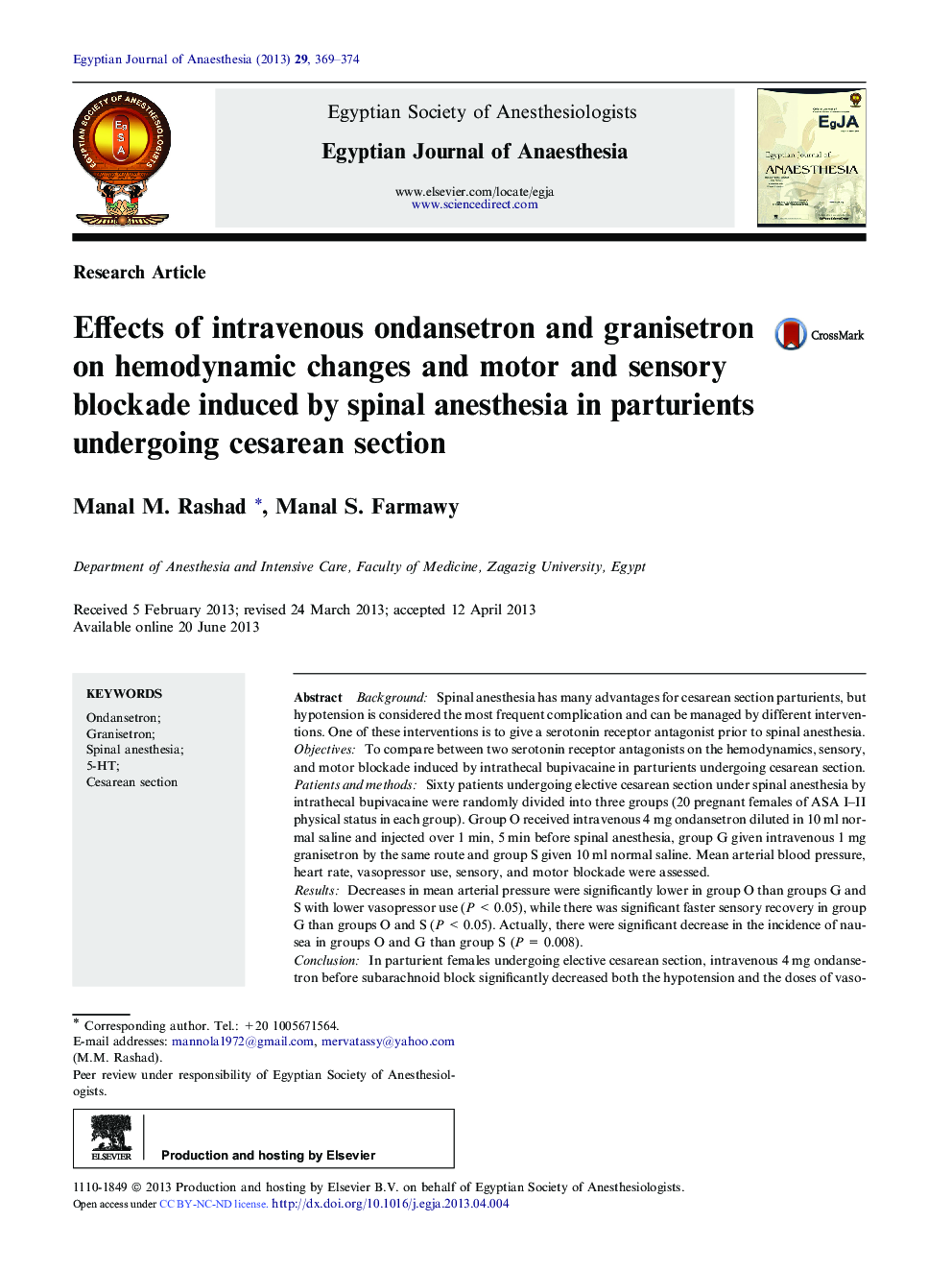| Article ID | Journal | Published Year | Pages | File Type |
|---|---|---|---|---|
| 2756366 | Egyptian Journal of Anaesthesia | 2013 | 6 Pages |
BackgroundSpinal anesthesia has many advantages for cesarean section parturients, but hypotension is considered the most frequent complication and can be managed by different interventions. One of these interventions is to give a serotonin receptor antagonist prior to spinal anesthesia.ObjectivesTo compare between two serotonin receptor antagonists on the hemodynamics, sensory, and motor blockade induced by intrathecal bupivacaine in parturients undergoing cesarean section.Patients and methodsSixty patients undergoing elective cesarean section under spinal anesthesia by intrathecal bupivacaine were randomly divided into three groups (20 pregnant females of ASA I–II physical status in each group). Group O received intravenous 4 mg ondansetron diluted in 10 ml normal saline and injected over 1 min, 5 min before spinal anesthesia, group G given intravenous 1 mg granisetron by the same route and group S given 10 ml normal saline. Mean arterial blood pressure, heart rate, vasopressor use, sensory, and motor blockade were assessed.ResultsDecreases in mean arterial pressure were significantly lower in group O than groups G and S with lower vasopressor use (P < 0.05), while there was significant faster sensory recovery in group G than groups O and S (P < 0.05). Actually, there were significant decrease in the incidence of nausea in groups O and G than group S (P = 0.008).ConclusionIn parturient females undergoing elective cesarean section, intravenous 4 mg ondansetron before subarachnoid block significantly decreased both the hypotension and the doses of vasopressor used, while intravenous 1 mg granisetron prior to subarachnoid block induced faster sensory recovery compared to both the ondansetron and the saline groups, with no significant differences between the later two groups.
